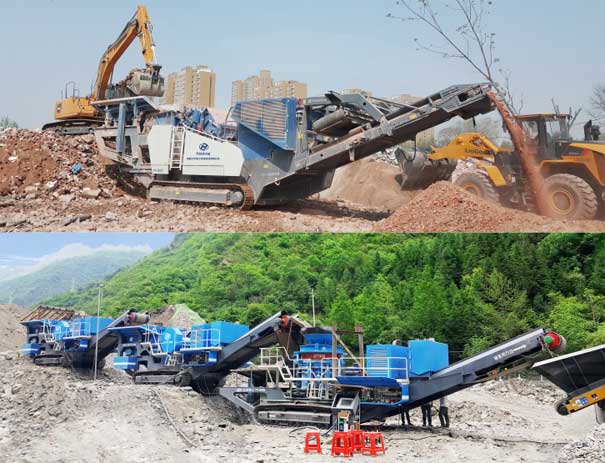Construction waste refers to all kinds of waste generated in the process of new construction, demolition, refurbishment, decoration and natural disasters of buildings, mainly including bricks, miscellaneous soil, waste concrete blocks, broken bricks, mortar, and various packaging materials waste. After crushing and making sand, it can be made into gravel aggregate, which can be used in various industries instead of natural sand.
After the construction waste is processed, the quality of the finished product is guaranteed, the use is wide, and the price is low. The price is 40%-60% of the price of other sand and gravel materials. After preliminary processing, the construction waste can generate 3 to 4 kinds of finished materials, of which 0-5 mm. The finished product can be used to make bricks, the finished material of 5-10mm can be used for concrete, the product of 10-20mm can be used for road construction, and the product of more than 20mm can be used for road cushions, production of various environmental protection bricks, soundproof walls, road paving, etc.
What equipment is needed for sand making from construction waste?
The process of construction waste sand making is similar to a traditional sand making production line, which mainly includes magnetic separation, crushing, sand making, screening and other links:
1. Magnetic separation
In view of the particularity of construction waste, magnetic separation must be carried out before crushing to separate steel bars, scrap iron, rags and wood strips.
2. Broken
Crushing is generally divided into primary crushing and secondary crushing. Primary crushing is mainly to crush large blocks of rocks, ore and other materials into smaller materials. Generally, a jaw crusher is used, which has a large crushing ratio and good effect; the crushed materials are finely crushed to form stone particles of uniform size, which is convenient for feeding in the sand making process. Generally, cone crushers and impact crushers are considered. If the overall size of construction waste is small, one-time crushing is also possible, which can be determined according to the specific process.
3. Sand making
Sand making is a very important link. At present, the PLS series vertical impact sand making machine is more widely used. Its advantage is that it has a shaping function and modifies the crushed materials to make the finished product good in shape and more suitable for construction sand requirements.
4. Sieving
Screening is generally the last process. It has an inspection function. The finished products can be screened. Those that meet the standards can be output and placed on the stock pile. Those that do not meet the standards will be crushed and sand made again.
The above is a traditional fixed construction waste production line, mainly for various complex components in construction waste, complex components in construction waste or construction waste that lacks local crushing space on the site. At present, there is targeted equipment for the crushing and sand making treatment of construction waste at irregular locations in the city-construction waste mobile crushing station. The whole equipment covers the entire fixed production line and has the following advantages:
1. The crushing efficiency is high, the recycled aggregate particle size is good, and the steel and concrete can be completely separated without harming the machine and improving the grade of the finished sand.
2. The layout is reasonable and compact, the floor space is small, the movement is flexible, and there is no need for long-term stationing, which reduces site placement costs and improves work efficiency.
3. The equipment configuration can be adjusted according to needs, and various crushing or sand making equipment can be flexibly matched according to process requirements. The equipment is cost-effective and practical.
4. Strict compliance with environmental protection standards is a distinctive feature of mobile crushing plants. Compared with traditional fixed equipment, mobile construction waste treatment equipment can achieve green production and environmentally friendly operation.
In short, the use of waste building concrete and waste masonry and the production of coarse and fine aggregates to produce the same grade of concrete and mortar are very effective for building materials; at the same time, using waste bricks to produce aggregates can produce bricks, wallboards, floor tiles and other products. In general, the sand made from construction waste can reach the standard of industrial sand, and the effect is good, and it can achieve both environmental protection and economic benefits!



